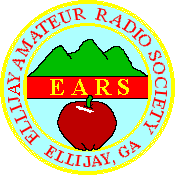February 8, 2010
1. You need a 50 Ohm, 1 Watt resistor in a circuit you are constructing. You don't have one but in your junk box you find 3 resistors: A 100 Ohm, 1 Watt Resistor, a 50 Ohm, ½ Watt Resistor and a 100 Ohm, 2 Watt Resistor. Which two resistors would you need to use in combination to meet your resistor need?
_____________________________________________________________1. You need a 50 Ohm, 1 Watt resistor in a circuit you are constructing. You don't have one but in your junk box you find 3 resistors: A 100 Ohm, 1 Watt Resistor, a 50 Ohm, ½ Watt Resistor and a 100 Ohm, 2 Watt Resistor. Which two resistors would you need to use in combination to meet your resistor need?
- a. 100 Ohm 1 Watt and 50 Ohm ½ Watt
- b. 100 Ohm 2 Watt and 50 Ohm ½ Watt
- c. 100 Ohm 1 Watt and 100 Ohm 2 Watt
The answer is c. Two main things to consider with this question: First, how to calculate the total resistance needed and Second the wattage of the resistor. The total resistance is where Question 2 below comes in. As to the wattage, if you need a 1 watt resistor, you wouldn't want to use a ½ watt resistor in this particular case. So you could eliminate the answers with 1/2 watt in them right away. That would make the right answer c.
2. In Question 1, how would you connect the two resistors?
- a. In Parallel
- b. In Series
The answer is a. The general rule for resistances is, resistors in series ADD their resistances and resistors in parallel DIVIDE their resistances. Since a 50 Ohm resistor is needed, the two 100 Ohm resistors in series would add up to 200 Ohms. Not what you want. So, the answer must be (a) Parallel. By the way, the formula for figuring the final value of two resistors in parallel is as follows. First, lets name one resistor R1 and the other R2. The formula is, R1 times R2 divided by R1 plus R2. In this case R1 = 100 Ohms and R2 = 100 Ohms. So R1 times R2 (100 x 100) equals 10,000. Next R1 plus R2 (100 + 100) equals 200. Finally, divide 10,000 by 200 and you get 50 Ohms.
3. What is the formula most hams use for calculating the length of a dipole antenna?
- a. Length = 2.68 times Height
- b. Length = 468 divided by Frequency in megaHertz
- c. Length = MC2
- d. Length = Base times Height.
The answer is b.
4. Using the formula in Question 3, what is the approximate length of a half-wave dipole antenna to be used at 14.200 MHz?
- a. 33 feet
- b. 66 feet
- c. 132 feet
- d. 16.5 feet
The answer is a. 468 divided by 14.200 = 32.9 feet or 33 feet rounded.
5. In NET Operation, who decides how the net will be conducted?
- a. The highest class licensee that checks into the net
- b. The first ham to check into the net
- c. The NET control operator
- d. The ARRL Section Manager
The answer is c.


No comments:
Post a Comment